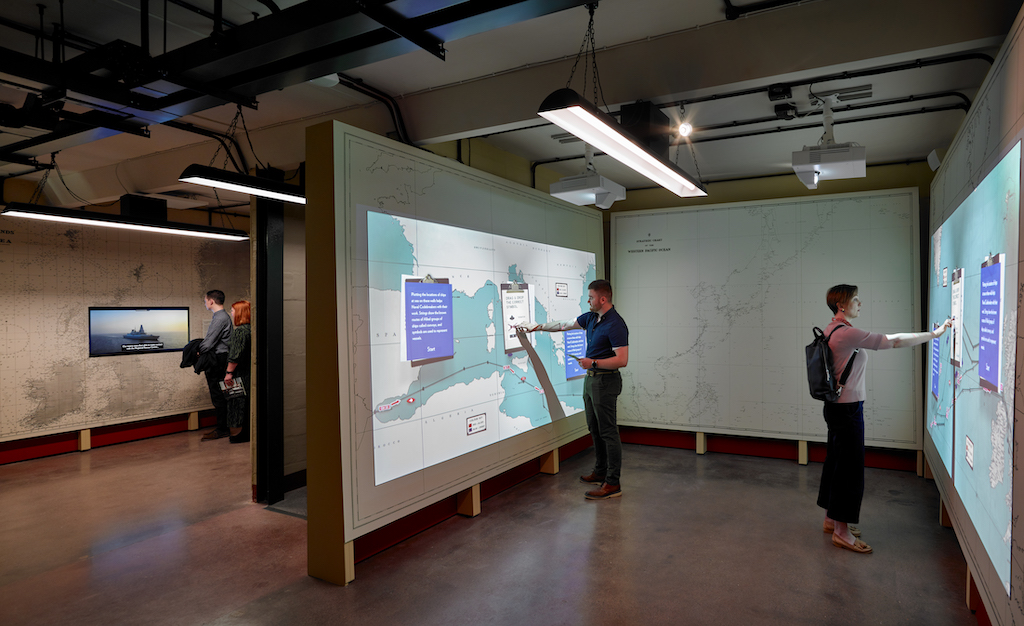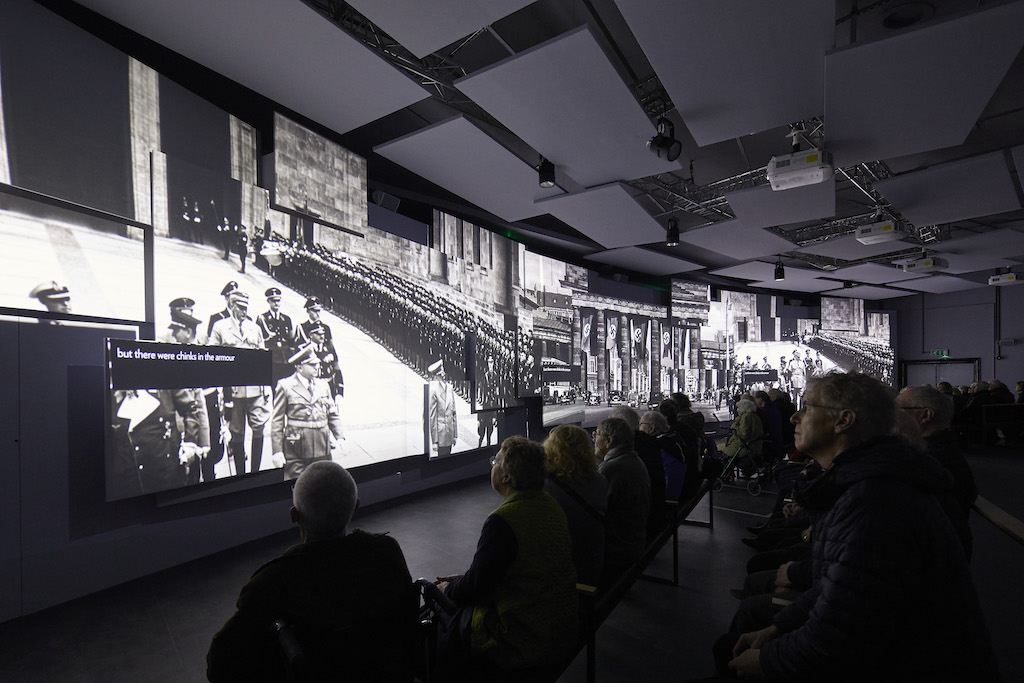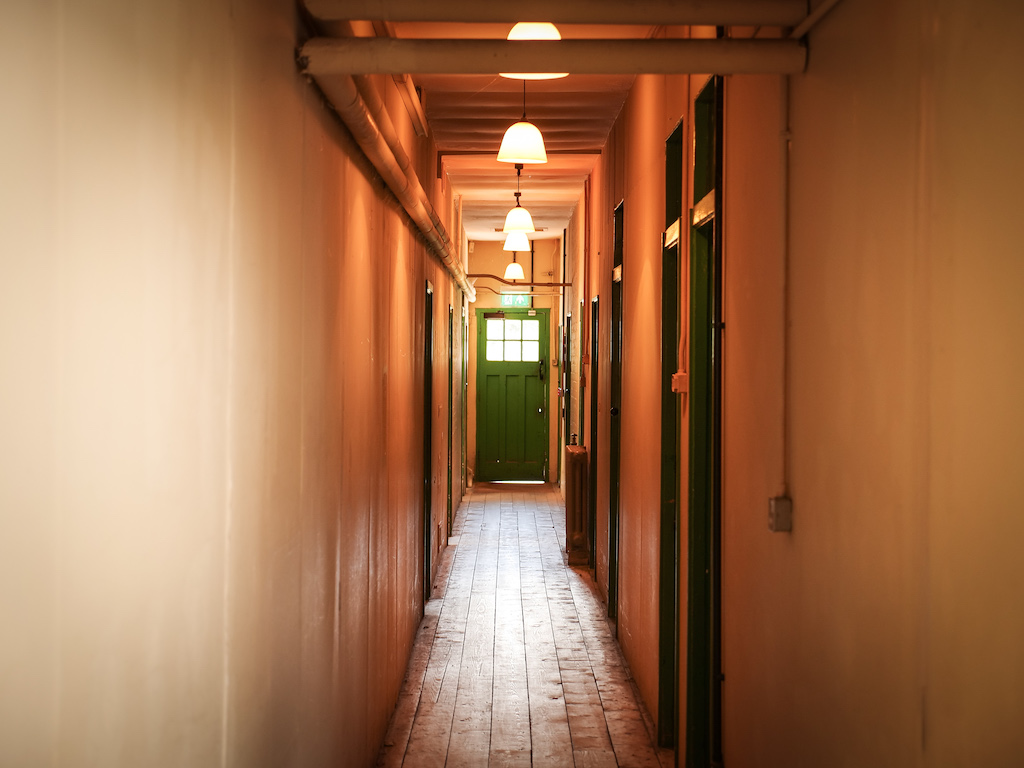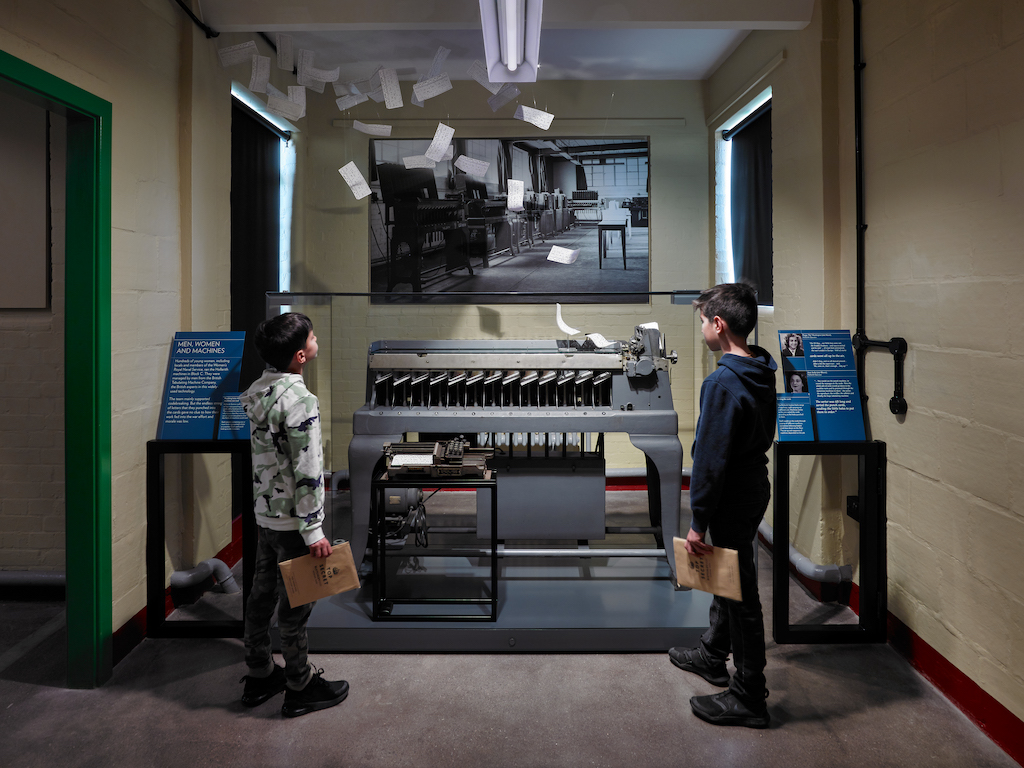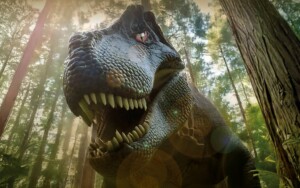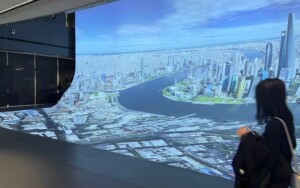A compelling and engaging visitor attraction and museum, Bletchley Park, the home of British World War Two codebreaking, is characterised by a sense of place which evokes the time when it was a secret hive of activity.
At a site that was originally an extensive Victorian estate, technological innovation and human endeavour fused in ground-breaking achievements that helped shape the world of today.
During World War Two, the Government Code and Cypher School (GC&CS), now the Government Communications Headquarters (GCHQ), was based at Bletchley Park. It grew from a small team of specialists to a vast intelligence factory of thousands of dedicated women and men, whose work contributed significantly to the Allied victory.
Blooloop caught up with CEO Iain Standen in the wake of the UK government’s global AI Safety Summit, hosted by Bletchley Park, in November.
An independent museum
Speaking in 2015, Standen, who started work as the CEO of the Bletchley Park Trust in January 2012 after 28 years as a commissioned officer in the British Army, told blooloop: “We’re not yet in the realms of Blenheim and the Nationals, but we are most certainly alongside Duxford.”
Commenting on that now, he says:
“The nationals are a different beast, in terms of funding, in how they’re constituted. We are still an independent museum. Therefore, we require a degree of commerciality to make sure that people want to pay the ticket price we set.”
Nevertheless:
“Our approach is professional. My team is full of people who have come from national museums, or who go on to national museums. In terms of the way we do our business, we are in the same league. To use that previous football analogy, we’re in the premier league now. Not only as a visitor attraction but also in all the other bits that you do as being a good museum, concerning how we look after our collection.”
Educational programmes at Bletchley Park
The curatorial team has also grown since those early days. It comprises a curator, an archivist, two historians, and an oral history officer, all supported by a team of volunteers. In 2015, there were around 5,000 school visits per year. Now, a nuanced learning programme draws between 35,000 and 50,000 school visits.
There is a lecture programme, and part of the recent £13 million redevelopment project included a 250-seat auditorium and event space.
“The new facilities allow us to grow that learning programme and our lecture series, moving into the academic space in terms of seminars, symposia, and so on,” Standen remarks. “We have everything you’d expect to get in a premier league museum and will grow them further. We still have bigger aspirations, but we are most definitely there.”
Concerning the demographic, geographically, local visits from those travelling 30 to 40 minutes comprise around 10% of visitation. At the other end of the scale, overseas visits comprise another 10%. UK day travellers make up the rest. However, exposure generated by the AI Safety Summit is likely, Standen feels, to attract further visitors.
An accessible story
Bletchley Park now tells the story for a generalist audience, something that was not always the case:
“When I came here twelve years ago, there was a lot of geeky codebreaking stuff, and that was it,” says Standen. “People were going away thinking, ‘I’m not worthy. I didn’t understand.’ That’s the wrong approach for a visitor attraction.”
“Now, people may not fully understand the code-breaking, but it’s a much more accessible story. Those who want more depth will use their annual pass, returning for repeat visits. They are advocates. They are the people who say, ‘You must come and see this.’ We rely so much, as many do, on word of mouth. It’s the best way of getting people to come here.”
When visitor numbers ramped up from 150,000 a year, reaching nearly 300,000 before the pandemic, the percentages stayed around the same: each sector grew proportionately.
Bletchley Park and the Enigma Cipher
Concerning the significance of the breaking of the Enigma Cipher in the outcome of the war, some historians have argued that Bletchley Park shortened the war and saved thousands of lives. In fact, while the vital intelligence and technological innovation undoubtedly had a profound influence on the war’s outcome, the extent of that influence is harder to establish:
“There were so many other factors in play at the time. The fact, for example, that the Russians were inexorably moving West,” Standen observes. “We’ve taken out the hyperbole, and are much more realistic now about what the contribution was.”
Essentially, the efforts of the men and women working at Bletchley meant that when the Allied troops went over the beaches, they knew exactly what they were facing.
“They knew what was out there, and what they had to deal with. That information advantage gives you a huge physical advantage when you’re fighting a battle. And that’s what this place did, in all sorts of areas.
“It gave the soldiers, sailors and airmen doing that the best possible picture. It also gave the leaders, right up to prime ministers and presidents, information that allowed them to make big decisions, committing hundreds of thousands of troops into dangerous places, to do it with the best knowledge they could have.”
Interactive exhibits
There are a range of interpretive techniques at Bletchley Park. These range from the traditional guidebook, through an iPod Touch multimedia guide and cinematic experiences, to a team of trained volunteer guides who conduct groups of guests on a tour around the site.
In the exhibitions, in addition to panels showing information, there are soundbite-type type films that summarise the stories. There are also numerous interactives rooted in the codebreaking piece, from an activity based on listening in to a radio transmission in Morse code to an interactive where ship convoys can be plotted on a wall, as in the 2014 film The Imitation Game.
“There are mechanical interactives,” Standen adds. “And there’s one where you can be in charge of Bletchley Park. You have to deal with all the people problems and come up with a solution to a whole range of dilemmas.”
At the heart of Bletchley Park, alongside the history of codebreaking, are the stories of its people.
“In the very early days, mainly people who had an interest in codebreaking came to Bletchley Park. So, it was all about codebreaking, which missed the people story.
“Things change, over time. The Alan Turing centenary in 2012 was important in terms of generating interest, but it focused on one man. Alan Turing was a groundbreaking genius, and he had a tragic end. But he wasn’t the only person at Bletchley Park. He led a team, but it wasn’t the only team, and he moved on. From 1943 onwards, he wasn’t working at Bletchley.”
A team effort
From 1943 onwards, the number of personnel at Bletchley rose to 9,000 people. Each of these was part of a team, from senior cryptanalysts to the people cooking the meals. Everyone had an important role to play:
“That is why we are making a point of this, particularly through our Intelligence Factory exhibition,” Standen explains.
The Intelligence Factory focuses on Bletchley Park’s wartime operations from 1942 to 1945. This is an exhibition in Block A, the largest exhibition space on site. It explores how Bletchley Park’s potential as an intelligence organisation was realised in the second half of World War Two. It operated at an industrial scale to meet operational demands, with a multi-skilled workforce of around 9,000. Interpretation is through objects, personal stories, and engaging moments of interaction.
“It’s about how everybody had a role to play, and making sure that we recognise the whole team. Our veteran population continues to dwindle in size. Most of those still alive are ladies somewhere between 95 and 103 – they were very young when they were here. Many were doing routine, boring jobs. Yet they were hugely proud that they were here and knew that what they did was important. It’s great for us to recognise that.”
Different ways of telling a story
The Bletchley Park team conducts visitor research before each exhibition.
“I think there’s been a backlash against too much electronic interactivity,” he comments. “We’ve got various bits and pieces that are physical, get-your-hands-on 3D interactives. The little cinematic experiences are useful. People can sit and let [the information] come to them, without having to work too hard. And we do make people work quite hard because the content can be difficult.”
It is, he explains, unfamiliar:
“If you go to a car museum, you know what a car does. If you hear a car can go to a hundred in so many seconds, it means something. But people have never come across a lot of the stuff we deal with here. We have to start by contextualising it, before telling the story about why it’s important. Sometimes people just want to be told. That’s what I like about our D-Day exhibition.”
A cinematic experience
On 6 June 1944, the Allies launched the largest amphibious landing in history. D-Day, codenamed Operation Overlord, saw tens of thousands of Allied troops land along the heavily fortified Normandy coastline, ultimately gaining a vital foothold in ‘Fortress Europe’.
An immersive, specially commissioned cinematic experience exploring Bletchley Park’s secret D-Day role, D-Day: Interception, Intelligence, Invasion, opened on 11 April 2019. Highlighting the crucial link between the men and women at Bletchley Park and their counterparts on the battlefield, it demonstrates how good intelligence spelt the difference between success and failure, life and death, and clarifies exactly how the Allies planned the historic operation.
“It’s a 15-minute immersive film that uses D-Day as a vehicle to talk about all the strands that come together at Bletchley Park, and how they weave together. It’s very good at taking some difficult concepts and boiling them down. That’s why it took months of thinking to write the script. Every single sentence means something, says something, and there are no wasted words. It’s very protein-rich, but it does give a very clear understanding.”
The short film is a masterpiece of interpretation. It draws a clear picture of the events and the strands connecting them without hyperbole, contriving to convey not only facts but a sense of immediacy, connecting the audience with the real people at the heart of that moment in our history. It is touching, and free from sentiment.
“You come out feeling it all makes sense; that it’s all been joined together. I don’t think you’d get that from content displayed in any other way.”
Exploring the art of data at Bletchley Park
The temporary exhibition space is currently showing The Art of Data: Making Sense of the World.
The exhibition demonstrates some of the ways that the Codebreakers visualised data, alongside contemporary 3-D, animated and interactive examples.
Standen explains:
“Most of our exhibitions are about the World War II story, but gradually, we have introduced new perspectives. For example, The Intelligence Factory has time portals that look forward. In the one talking about breaking naval code, the forward story is about the EncroChat phone system that the organised crime gangs were using, how they were broken and listened into so the gangs could be convicted.”
Modern, equivalent stories illuminate the relevance of the work done at Bletchley Park.
“Where The Art of Data, and the next exhibition, which is on AI are different, is that the portal looks backwards,” he comments. “The core story is modern, and looks back at the foundations.”
An interesting history
Dr Thomas Cheetham, research officer at Bletchley Park Trust, filled in some of the site’s history.
The Government Code and Cypher School (GC&CS) was formed in 1919, at the close of the First World War – the first war which involved large-scale radio communications. The aim of forming this organisation was to avoid losing this expertise. By the beginning of the Second World War, it consisted of about 150 staff mostly working on diplomatic traffic. There wasn’t a lot of military traffic to intercept before the start of hostilities.
The head of MI6, Admiral Sir Hugh Sinclair, bought Bletchley Park, a vacant estate in Buckinghamshire, in 1938 as a secret war station for his organisation – the whole of MI6, and also codebreaking by GC&CS.
Fear of bombing drove the decision; if London were bombed, it could be disastrous. Evacuation plans were put in place, and Sinclair’s were carried out.
Bletchley Park had been the home of the Leon family. Sir Herbert Leon was a financier and Liberal Party politician, and Fanny, his wife, was a philanthropist. A prominent local family from a Jewish background, they both died by the 1930s. The family weren’t interested in holding onto the property. They sold it to a local property developer, Captain Hubert Faulkner. He intended to demolish the buildings and sell the land for housing. At this point, Sinclair approached him.
First codebreaking at Bletchley Park
“We don’t really know the details,” Cheetham comments. “My suspicion is this has something to do with hunting. It was a big hunting area. We know that royalty, people from the intelligence service, and the government all frequented Whaddon Chase Hunt. They were all moving in the same circles.”
That might have been how Sinclair learned about the property. He had discussions with Faulkner and agreed to buy the mansion for 6,000 pounds. As Head of the Secret Intelligence Service (SIS), he had access to non-public forms of funding. However, according to the original documents, he bought Bletchley Park in his own name.
Initially, the purchase included the house, and a limited area around it, now incorporating the huts. This explains why some appear to be crammed together against what was then the boundary line. Later, the rest of the estate was requisitioned as more space was required.
“The first time that codebreaking work happened here was September 1938, when the Munich crisis made everyone think a war was going to happen – though it didn’t. They were able to pivot this mobilisation into a bit of a test run.”
The early days
This was a good thing because it didn’t go well. Numerous communication and administrative problems needed to be addressed. He adds:
“They spent about six weeks here practising, and came back the following year, in August 1939. There was a bit of warning that Hitler was probably going to invade Poland. So, they came down here in plenty of time to get set up. It went far better this time, and they were in quite a good position when war broke out.”
When war broke out, they were working in the ground-floor rooms of the mansion. Initially, it was just GC&CS. When the rest of SIS joined them, it became very cramped. There was, he remarks, a certain amount of friction:
“SIS were much better resourced – and paid. They turned up with big chauffeur-driven cars and members of staff. Meanwhile, the codebreakers were trying to break codes on a shoestring. And they were having to put up with all the disturbance involved.”
There was a great to contend with, since a section of SIS, Section D, a forerunner of the Special Operations Executive, was researching ways to cause disruption in occupied countries, and were blowing things up in the grounds. Meanwhile, GC&CS was bringing in more staff. They had put a list together before the war of around 150 people whom they would recruit when they had the money to do so. At this point, they recruited a third of them.
Early recruits included such significant figures as Alan Turing, Gordon Welchman, Hugh Alexander, and Stuart Milner-Barry.
Recreating the atmosphere
Mathematicians were a new kind of codebreaker, a departure from the linguists who preceded them, though linguists and classicists in a more traditional mould were also trickling in. The mansion quickly became crowded. The workforce overflowed beyond the building, to the consternation of Alastair Denniston, who was in charge, and worried about codebreakers being too far apart to work cooperatively.
However, the crowding was a fact. Work continued in the outlying huts for two or three years, before the addition of permanent buildings.
In the mansion, the library has been recreated from photographs to appear – minus a fug of cigarette smoke – exactly as it would have done then, with a jacket over the back of a chair, Neville Chamberlain’s voice on the radio, and ranks of desks equipped with telephones, papers, typewriters, and the odd enamel mug.
According to contemporary descriptions, at one point, there would have been as many as 30 people working in this room at the same time, sharing desks, or working on the floor.
Preserving Bletchley Park
Another preserved room concerns a less well-known part of Bletchley Park’s legacy. This is the room where the US – UK special relationship was born.
Thomas Cheetham elaborates:
“Four American codebreakers arrived for a meeting in 1941, coming into the room in the middle of the night, where Alastair Denniston was sitting at his desk, with his deputies. This was a meeting of the two nations at a point where I don’t think any of the Americans had ever met a Brit. The countries were far more disconnected than they are now.”
“Obviously, in 1941, America hadn’t joined the war. They were exploring the possibilities for cooperation, but it was a leap of faith on both sides.”
He adds:
“It all started here. The Americans were brought into the secret of Enigma-breaking, and codebreaking more generally. They brought their own gift for the British, a Japanese cypher machine. They ended up gaining a lot of respect for one another. The relationship got off on the right foot, and all the political cooperation flowed from that. Fundamentally, it was an intelligence-sharing relationship, in the beginning, which started right here.”
Enigma-breaking
By the end of 1945, there were more than 20 Huts on site. There were also several large permanent brick and steel blocks. Five huts are open with interpretation, plus Hut 4 (café). These huts are a time portal, perhaps the most evocative part of the Bletchley Park journey.
“This is the beating heart of Enigma-breaking,” Cheetham says of Hut 6:
“Enigma-breaking started after the war broke out when they got that information from the Polish. That started in the stable-yard cottages. When they started breaking Enigma they set up new sections to handle it. Hut 6 was reading and decrypting the (relatively) simpler Army and Air Force form of Enigma. There was also the Naval Enigma. This was the same machine, but harder to break because the German Navy had better procedures, better cipher security.”
This was because Admiral Dӧnitz, who was in charge of the U-boats, was keen to keep the German Naval operations secret, even from the German Army.
Hut 8, Alan Turing’s section, was working on breaking Naval Enigma, and collaborating with those working in Hut 4, the German Naval Section dealing with non-Enigma messages. Today, Hut 4 is a café serving freshly made hot food, including fish and chips, as well as sandwiches, salads, cakes and other baked goodies.
Understanding ciphers
Cipher-breaking, Cheetham explains, is rooted in human error.
“Enigma is a perfectly secure system. It was slightly old-fashioned by the early 40s, but still perfectly good, as long as it was used properly.” However, Enigma is only one example of one crypto technique. There was a lot to it and more than just Enigma being worked on at Bletchley Park.
In terms of the errors the codebreakers were able to exploit, he adds:
“When you send an Enigma message, it has three rotors. You need to tell the recipient of the message where the rotors are in your machine when you encipher your message.”
That translates, essentially, to a three-letter password, where each letter is related to the position of the rotors. The Germans were meant to come up with the three letters randomly. But they were using bits of names – their girlfriend, Rommel, Hitler, or Berlin, for example, or would spell out vertical patterns on the keyboard, which would give three letters to work with.
Some German operators would always use a vertical keyboard pattern, going right down the keyboard and then back to the beginning in a predictable way:
“If you got to know that operator, then intercepted another of these messages, you’d be able to predict all his message indicators. That would give you lots of material to work with,” he comments:
“It would tell you the starting positions of the rotors in the machine. So, by tackling each component separately, you could start to work out what the rotors were doing. On a good day, you’d be able to rule out so many possibilities that you would be left with just a few thousand to go through. It’s not about finding the right answer, but about ruling out all the wrong ones. They didn’t break even a majority of the German communications, but they broke what they needed to read.”
Transforming Bletchley Park
The Bletchley Park Trust recently completed its transformational three-phase £13 million redevelopment project. As the attraction grew, it recovered some buildings that had reached the end of their lease, and that had been occupied by tenants until 2020.
“There are three contiguous buildings, separate, but joined,” explains Standen. “One is now our new exhibition space.”
This houses The Intelligence Factory and the temporary exhibition space:
“Between the two is a smaller building, which is our proper, state-of-the-art collection centre. It has fantastic storage downstairs with nitrogen suppression systems, and so on. Upstairs, there is a digitisation suite and a reading room. The third piece is our learning facility. There are nine spaces, eight of which are principally classrooms. One is a lunch space.”
Then there is the 250-seat auditorium:
“We’ve got the first public lecture coming up this weekend, and have had the first seminar, a lecture followed by a panel discussion. We managed to get some illustrious people from the intelligence community to come in.”
AI summit
Hosting this type of event, he observes, allows Bletchley Park to own its story.
The recent AI summit, held at Bletchley and attended by world leaders, was also useful in terms of global exposure, cementing Bletchley Park’s ongoing relevance in the public perception:
“People see now why they should come to this place to ask these questions and engage with these stories,” he observes.
As far as the future is concerned, he adds:
“It’s a bit like the Forth Road Bridge. We’ve got to that point, 10 years after we opened the game-changing lottery-funded phase, where some of that stuff is going to be revamped. Then there is a certain amount to be done around cipher machines, talking about the code-breaking process in more accessible language.”
Additionally: “We still have 60,000 square feet of unused building that we aspire to develop in the future.
“We are mindful that this story changes over time, how people understand it changes with the context. We are another 10 years on from the Second World War than when we started; how we tell that story has to change.
“There is, too, a lot of scope in terms of expanding the wider intelligence story. If you ask anybody in the UK to talk about somewhere synonymous with intelligence, they will name Bletchley Park. This gives us a platform to widen the story and tell some other interesting stories about intelligence, which is something that Britain is good at.
“Everybody loves a good spy story, and there are also the modern-day technological stories that come out of here. We’ve got a huge bank of stories to draw on.”
A registered charity, heritage attraction, and independent museum, The Bletchley Park Trust continues to reveal secrets and tell fascinating stories of our national legacy.




